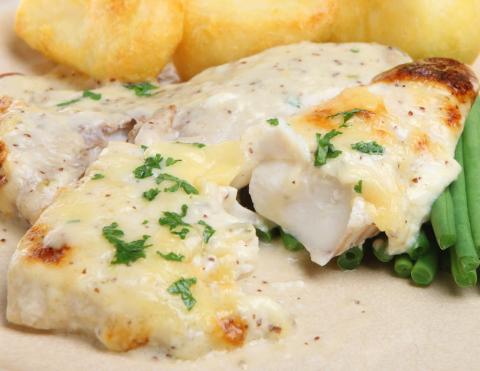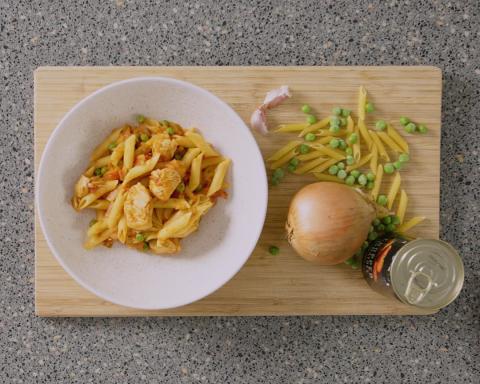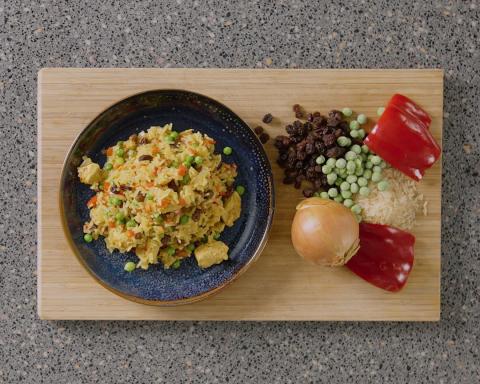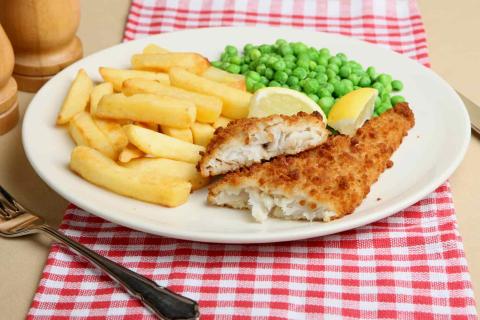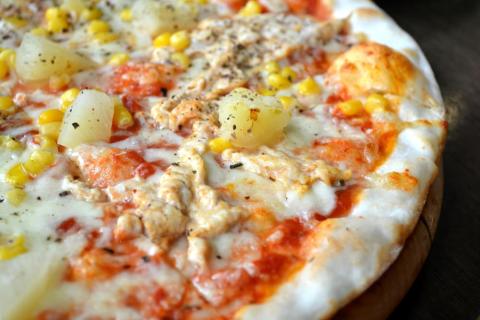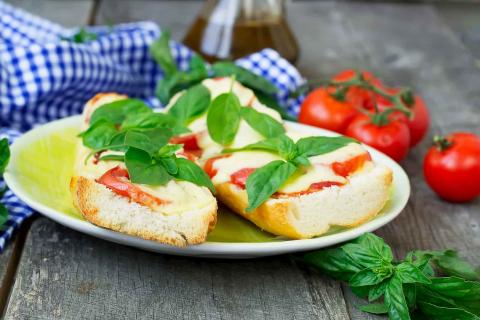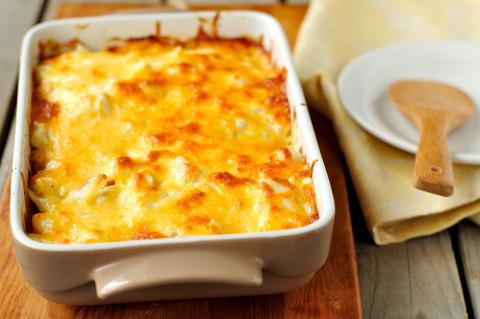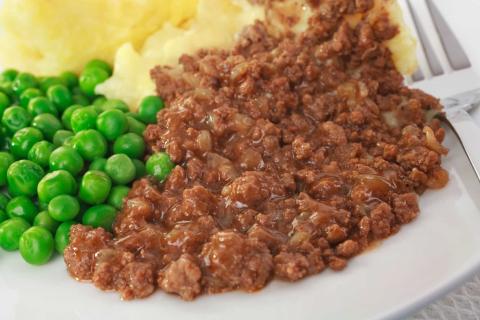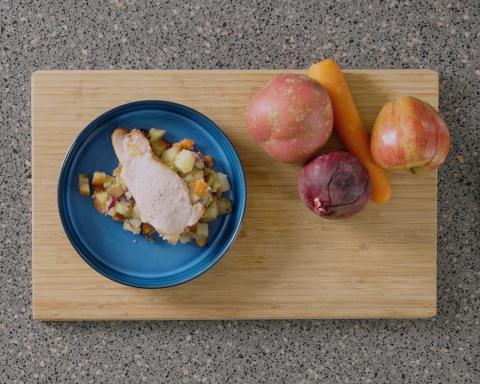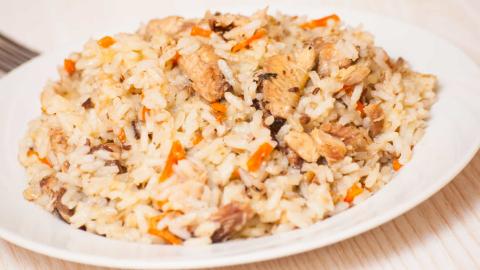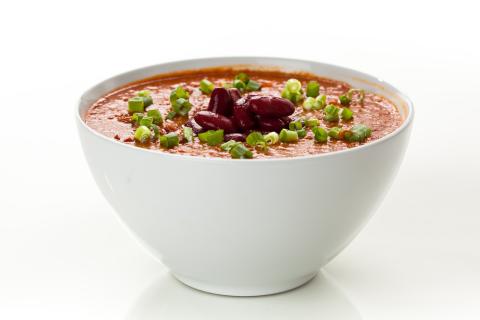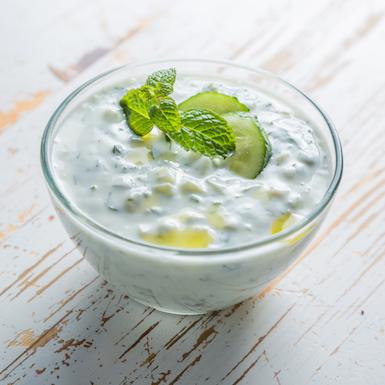- 1 Lean Pack (500g) Minced Beef
- 1 (3g) Garlic Clove
- 2 Small Sized, Sliced (120g) Onion
- 2 Optional Tablespoons (2g) Flat-Leaf Parsley
- ½ Level Spoonful Teaspoons (1g) Mixed Herbs
- 1 Tablespoons (10g) Vegetable Oil
- 4 (200g) Burger Buns
- 2 (170g) Tomatoes
- 4 Leaves (20g) Lettuce
- 3 Tablespoons (45g) Reduced Calorie Mayonnaise
- 2 Mild Teaspoons (10g) Mustard
Ingredients
Allergy Disclaimer
Always check the label of each ingredient for allergy warnings.
Method
- Heat the oven to 230°c / 210°c fan oven / 450°F / gas mark 8.
- Peel the garlic and first onion and wash the parsley. Then crush the garlic and finely chop the onion and parsley.
- Use a wooden spoon to combine the burger ingredients (mince, garlic, one onion, parsley, and dried herbs) together, except for the oil. You can use a food processor if you have one.
- Divide the mixture into equal sized balls using your hands, or press each portion of the mixture into a plain cutter or food ring on the baking tray to make a burger. Lightly brush the top of each burger with oil.
- Bake the burgers for 10-15 minutes until they are cooked through, with no redness remaining and juices running clear.
- Meanwhile, peel and finely chop the second onion. Wash and slice the tomatoes and wash and shred the lettuce.
- Combine the mayonnaise, onion and mustard in a bowl to make a mayonnaise topping.
- When the burgers are cooked, lift them on to the buns. Top them with the tomato slices, lettuce and mayonnaise topping. Serve immediately.
Cost Saver Tips
Prepare more burgers than needed and freeze before cooking.
Nutritional Information
Based on a single serving of 247g (% of an adult's reference intake)
Energy
431 kcals ( 22 %)
1,803 kJ ( 22 %)
Fat
6.2 g ( 31 %)
Saturates
26.9 g ( %)
Sugar
4.7 g ( 5 %)
Salt
1.4 g ( 24 %)
Detailed nutritional information
| Per 100g | Per 247g serving | |
|---|---|---|
| Energy Kcals | 174 | 431 |
| Energy Kj | 730 | 1,803 |
| Protein | 13.5 g | 33.5 g |
| Total Fat | g | g |
| Saturated Fat | 2.5 g | 6.2 g |
| Carbohydrates | 10.9 g | 26.9 g |
| Total Sugars | 1.9 g | 4.7 g |
| NSP Fibre | 0.7 g | 1.7 g |
| Sodium | 232 mg | 572 mg |
| Salt | 0.6 g | 1.4 g |
Find out about nutritional labelling
Nutrition labels on the front of packaging
- Most of the big supermarkets and many food manufacturers display nutritional information on the front of pre-packed food.
- Front of pack nutrition labels provide information on the number of grams of fat, saturated fat, sugars and salt and the amount of energy (in kJ and kcal) in a serving or portion of a recipe.
- The labels also include information about reference intakes (expressed as a percentage) which are guidelines about the approximate amount of particular nutrients and energy required for a healthy diet.
- The colour coding tells you at a glance if the food has high (red), medium (amber) or low (green) amounts of fat, saturated fat, sugars and salt.
- The more greens on the label, the healthier the choice
- Amber means neither high nor low, so you can eat foods with all or mostly ambers on the label most of the time.
- Reds on the label means the food is high in that nutrient and these are the foods we should cut down on. Try to eat these foods less often and in small amounts.
Food shopping tips
If you’re trying to decide which product to choose, check to see if there's a nutrition label on the front of the pack. This will help you to quickly assess how your choices stack up. You will often find a mixture of red, amber and green colour coding for the nutrients. So when you're choosing between similar products, try to go for more greens and ambers and fewer reds if you want to make a healthier choice.
 Activities & Play
Activities & Play Behaviour
Behaviour Childcare
Childcare Development & Growing Up
Development & Growing Up Family, Friends & Relationships
Family, Friends & Relationships Feeding Your Baby
Feeding Your Baby Food & Eating
Food & Eating Health & Safety
Health & Safety Mental Health & Wellbeing
Mental Health & Wellbeing Money & Work
Money & Work Online Behaviour & Safety
Online Behaviour & Safety Pregnancy & First Days
Pregnancy & First Days School & Education
School & Education Sleep
Sleep














